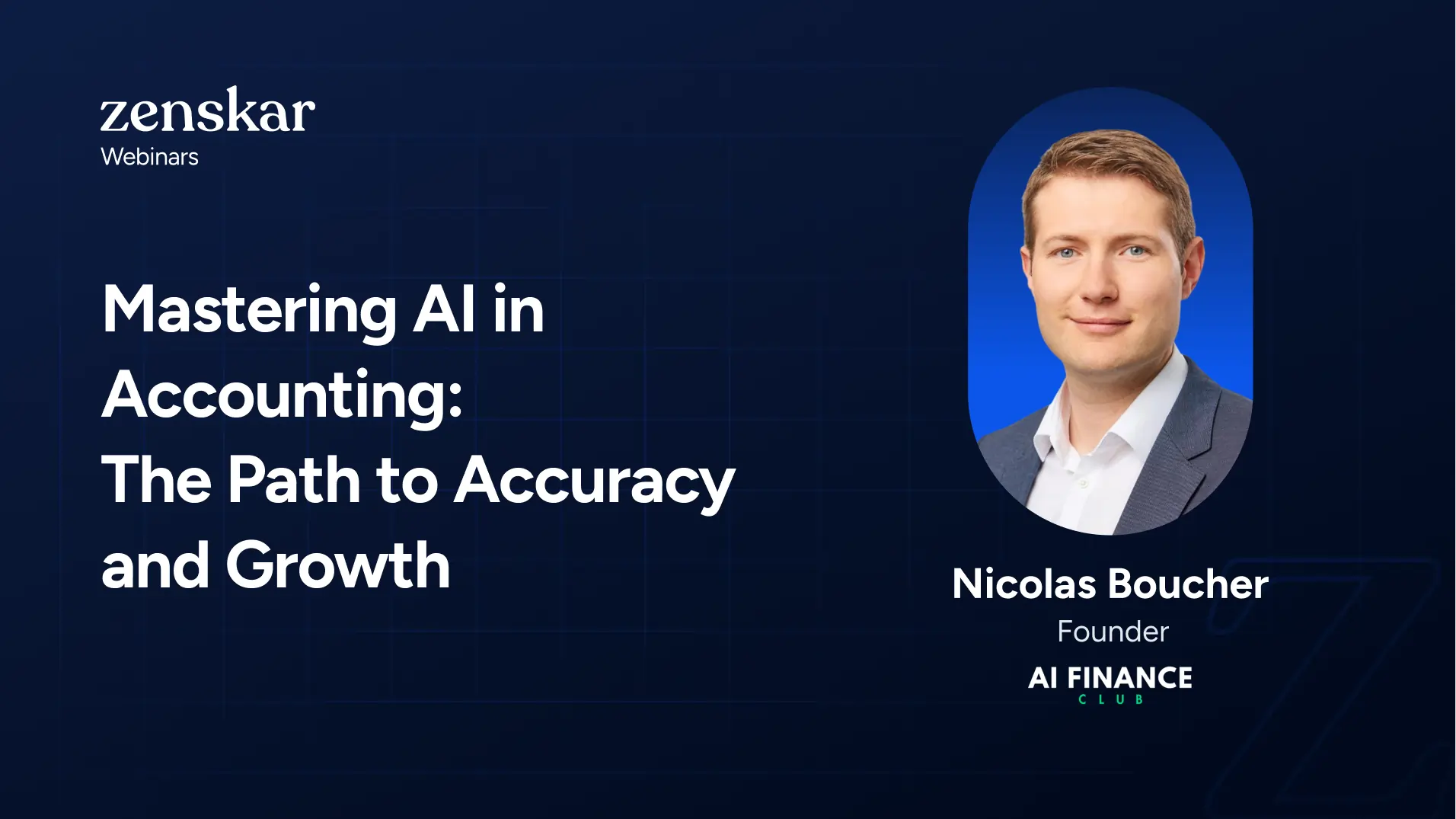"The advent of subscription licenses changed how we recognize revenue.”
The software industry, which used to operate on a perpetual license model, gradually shifted towards subscription and usage-based models, largely facilitated by cloud technology. This change made revenue recognition less about outright sales and more about managing customer relationships and service delivery over time.
The subscription model has certainly gone on to simplify financial management in the enterprise world. But it has also introduced newer complexities in tracking and recognizing revenues, based on usage. Some of them include — complex contract arrangements, regulatory and compliance issues, integration of business models.
The onus is now on having transparent and reliable systems to manage these transactions.
Here are a few things to think about while trying to navigate modern revenue recognition
- Advanced accounting systems — Utilizing revenue recognition software that can handle multi-element contracts and complex billing scenarios is crucial. These systems should automate processes and ensure accuracy in the allocation and recognition of revenue.
- Regular training and upskilling — Ensuring that finance and accounting teams are up-to-date with the latest regulatory changes and technological advancements. Continuous education helps in adapting to new standards and understanding complex contracts better.
- Clear documentation and transparency — Maintaining detailed documentation of contracts and performance obligations, along with transparent financial reporting that clarifies revenue recognition practices to stakeholders.
- Aligning revenue recognition with business strategy — By focusing on the economic rationale behind transactions, companies can better manage revenue recognition, ensuring it reflects true business activities and customer engagements.
These are only a few. We believe there is far more importance to integrating financial practices with business objectives to manage several of your different revenue recognition complexities.
We spoke with Viraj Patel, CFO at Signeasy, while he spoke extensively on the importance of understanding a business's economic model for successful revenue recognition. Our discussion with him not only clarified the complexities of revenue recognition but also highlighted its evolution and its ongoing adaptation in the face of technological advancement.
Speakers:
Viraj Patel, CFO, and Board Advisor
- Four decades of experience in the world of finance
- CFO and Board Member with PE/SPAC/IPO experience; Public and Startup Companies
Apurv Bansal and Saurabh Agrawal, Founders at Zenskar
Webinar Summary
1. Can you walk us through the shift from hardware to software-based revenue models, and its impact on revenue recognition?
The shift from hardware to software fundamentally changed revenue recognition. With hardware, it was relatively straightforward—if you sold a product, you recognized the revenue upon delivery. But with software, especially in the subscription model, the revenue recognition becomes more nuanced. For instance, when I worked with Avanti Corporation, we transitioned 50% of our backlog from perpetual licenses to subscription models. The move meant we couldn’t recognize all the revenue upfront. We had to use the percentage-of-completion revenue recognition method, recognizing revenue over the life of the contract as the service was delivered.
2. What are the challenges in managing revenue recognition with hybrid models like subscription and usage-based pricing?
Hybrid models, such as subscription combined with usage-based pricing, require constant monitoring of both the fixed and variable components of the contract. At Resilinc, where we offered AI-driven supply chain tools with usage-based pricing, we had to track not just the fixed subscription fee but also the variable charges tied to the data usage. The key challenge was managing fluctuations in usage. The accounting team needed robust tools to accurately capture and recognize revenue as customers hit certain usage thresholds.
3. How does understanding the economic model behind revenue recognition impact decision-making?
The economic model directly informs how revenue should be recognized. For example, in the early 2000s, I worked with a company where we were licensing chip design software. The sales team wanted to charge a hefty upfront fee, but I realized that startups couldn’t afford it. Instead, we moved to a subscription model, charging based on the number of users, which was more in line with their economic capacity. This move not only aligned with their cash flow but also allowed us to create predictable, recurring revenue streams.
4. Can you explain the role of performance obligations in revenue recognition?
Performance obligations are critical in modern revenue recognition frameworks. They define when a company has fulfilled its responsibility to the customer and can recognize revenue. For example, at my time in telecom, we had hardware, software, and maintenance services bundled into one contract. The challenge was to bifurcate the value of each component and recognize revenue over time as the services were delivered. For a Software as a Service (SaaS) company, performance obligations are generally tied to software usage, and revenue is recognized as the customer uses the software.
5. How have regulatory changes impacted revenue recognition, especially with subscription models?
Regulatory changes, particularly with the advent of new accounting standards like ASC 606, have made revenue recognition more complex. Under ASC 606, companies are required to break down their contracts into distinct performance obligations and recognize revenue as each obligation is satisfied. This was especially impactful when we moved from a perpetual license model to a subscription model. At Fabric Genomics, we had to align our revenue recognition practices with these regulations while keeping track of subscription payments and usage-based charges.
6. What advice would you give to CFOs looking to handle revenue recognition more efficiently?
My advice would be to focus on building a strong economic model first and let the revenue recognition system align with it. Once you understand how the business generates value—whether through product sales, services, or subscriptions—you can design your revenue recognition process around that. I worked with several companies where the CFOs tried to overcomplicate the process by focusing too much on the accounting rules without understanding the business’s economic drivers. It’s vital to choose tools that are flexible and scalable, such as cloud-based accounting systems, that can handle the nuances of modern business models.
7. How can businesses manage the complexity of recognizing revenue in subscription models with varying pricing tiers?
Subscription models with varying pricing tiers require careful tracking of what each customer is entitled to and when. At Signeasy, for instance, we had a simple model where we charged per user, but the pricing varied depending on the customer’s needs and features. The key was to ensure that each customer’s subscription was properly segmented into base fees and optional add-ons, each with its own performance obligation. By leveraging automated tools and integrating them into our billing system, we were able to accurately track usage and recognize revenue accordingly.
8. What’s the best way to handle revenue recognition when transitioning from one model to another, like from licensing to subscription?
Transitioning from licensing to subscription models requires clear communication with customers and adjustments to your revenue recognition practices. At Avanti, we were moving from a traditional license-based model to a subscription model, which meant we had to adopt new methods of tracking revenue. We ensured that all existing contracts were renegotiated with clear clauses defining performance obligations. From an accounting standpoint, we implemented a hybrid approach initially, recognizing revenue from the old licenses upfront while gradually transitioning to a more consistent revenue stream from subscriptions.

















.webp)
